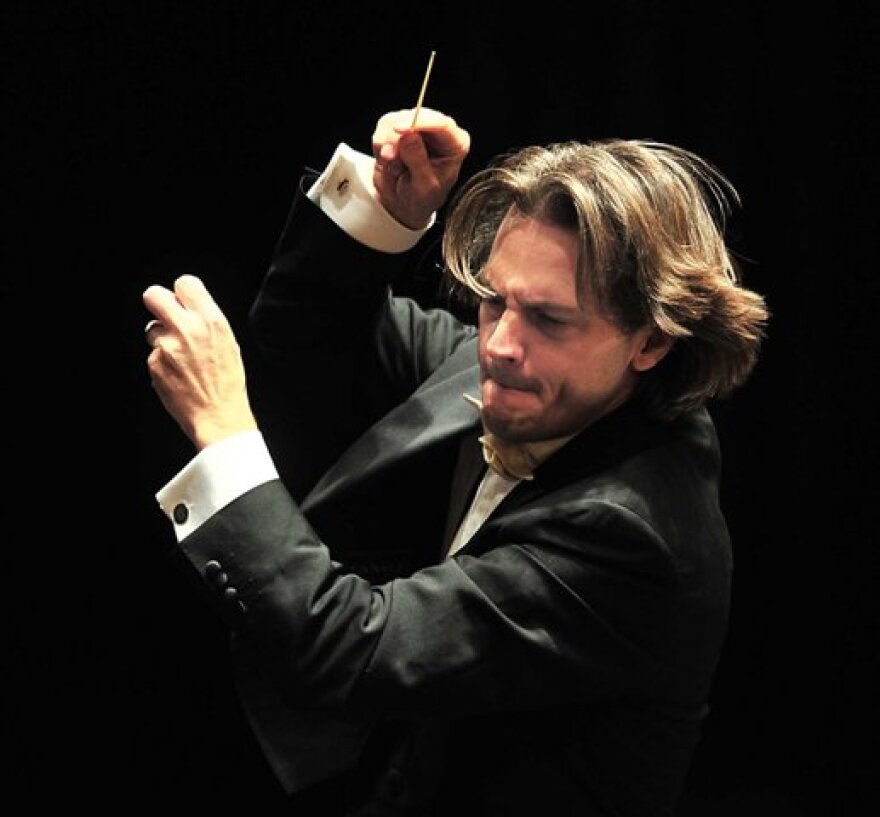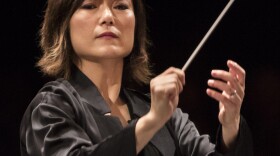NOTE: This is the first in a two-part series about the search for the Asheville Symphony Orchestra’s next music director.
The Asheville Symphony is a part-time orchestra. Everyone responsible for the music has another job, or two jobs. So it’s a little stunning to learn how many people applied to become the orchestra’s next music director.
437.
This very part-time job attracted 437 applicants. That tells you a few things. Yes, people want to come to Asheville. That’s no mystery. And yes, it’s a buyer’s market -- there are far more conductors looking for jobs than there are open spots on a podium.
“We had several rounds, and the first round we started with paper. You look at their resumes,” said David Whitehill, the orchestra’s executive director and one of just two people who looked at every application.
“You could really tell who’s ready for this next step in their career,” he said.
From there, Whitehill trimmed it to 150, and the full selection committee trimmed that to 90, then 30. Now there are six finalists, each of whom is conducting one concert on this season’s calendar. The first is Oct. 21, when Asheville meets Rei Hotoda, the only woman among the finalists.
The Brevard Philharmonic is going through the same process right now. The 54 original applicants are down now to four finalists auditioning this season.
So how does someone beat the odds of 437-to-1 to become the next music director of the Asheville Symphony?
“The cover letter tells you quite a bit about ‘Do I sense an excitement in their applying for this position?’” said Chip Hill, a clarinetist in the orchestra for 32 years. Hill is among five musicians on the nine-person selection committee.
“Then you start looking into what they’ve done musically, where are they and what they’ve accomplished,” he said. “You have some with a lot of experience who might be on their way out rather than looking at them innovators.”
“What we’re seeing in applications today is a greater diversity among the applicants,” Whitehill said. “It’s conductor as teacher, conductor as advocate, conductor as maverick, conductor as risk-taker, conductor as genre-bender.”
Some things about the process haven’t changed in decades: Musicians talk with other musicians, administrators and board members talk to their peers in other cities. Reputations and spread quickly in this rather tight world.
But a lot has changed since Asheville Symphony chose Daniel Meyer as music director 13 years ago. For one, YouTube didn’t exist back then. Today, orchestras scout and research online before ever interviewing anyone. And those interviews now happen through video Skype before anyone comes to town to meet with orchestra insiders and work with the musicians.
“If they have a YouTube channel, you’re going to see the best of the best on there,” Hill said. “You get to see mostly performances, but you don’t typically see rehearsals, and that’s really where most of the work takes place. That’s really how you see how a conductor and orchestra work together.”
There’s consensus within this orchestra that it made great leaps in artistry and quality under Daniel Meyer. The open question insiders are asking themselves and each other: Do they want to continue down the Meyer path or bring in someone with a different compass?
“Many of the musicians have different backgrounds and some want a very detail-oriented conductor, others prefer a more laid-back and slightly quiet conductor,” said Michael Brubaker, who plays the horn. “When I mean quiet, they don’t tell us in verbal communication; they tell us with their hands.”
“There’s a sense of desiring to have a tighter community with this music director,” said oboist Cara Jenkins, one of Meyer’s first hires in Asheville. “Just having this ability to know him or her on a deeper level, it always intensifies the music on stage.”
Choosing a music director has grown so complex the League of American Orchestras has a 60-page handbook to guide orchestras through every step and consideration. One is preparing board members who have no musical training how to begin assessing the work of a conductor.
“It’s not like listening to an audition of a violinist or trumpet player. You can hear and listen and tell what they’re doing. The conductor, when they’re in front of the orchestra, isn’t really doing anything except waving their arms around,” said Jesse Rosen, president and CEO of the League of American Orchestras.
“It’s not always evident what’s making it go,” he added. “There’s a little mystery to the whole thing.”
For each finalist, it all comes down now their week with the orchestra -- three days of rehearsal, just one performance.
“It’s such a quick turnaround. They’re only here with us for four days,” Jenkins said. “They have to make the best impression.”
“Most orchestras can size up a conductor from the time they walk from off stage onto the podium,” Whitehill said. “That first step on the podium almost determines everything.”
In Part Two, you’ll hear from the outgoing director Meyer and finalist Rei Hotoda about their thoughts on winning a job in today’s tough market for conductors.




